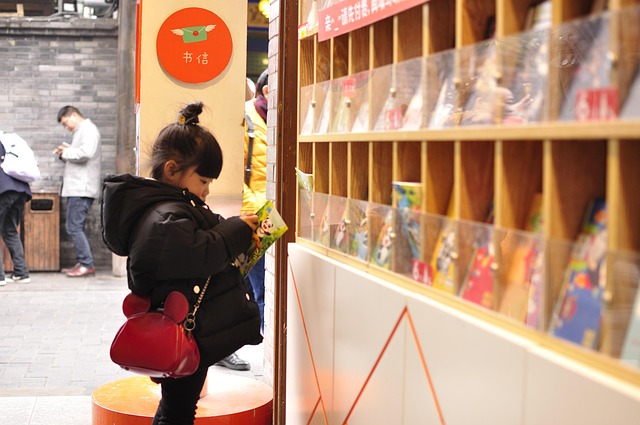In the evolving landscape of industrial automation, the concept of graded perception has emerged as a cornerstone for bridging human intuition and machine precision. Unlike binary sensing, which merely flags presence or absence, graded perception quantifies subtle variations in sensory input—light intensity, vibration, temperature, chemical concentration—and feeds them into sophisticated machine learning models. The result is a robot that not only sees but also interprets context with human‑like nuance.
Foundations of Graded Perception in Sensors
At its core, graded perception relies on two pillars: high‑resolution sensors and adaptive data pipelines. Modern photonic detectors can resolve intensity differences in the micro‑lux range, while MEMS accelerometers capture micro‑g accelerations. When these raw streams are fused through Kalman filters and attention‑based neural nets, a composite metric emerges that reflects the relative importance of each stimulus. The sensor stack becomes a continuous spectrum rather than a set of discrete states.
- High‑dynamic‑range cameras for optical grading
- Low‑noise acoustic arrays for proximity estimation
- Spectral sensors for material composition assessment
From Pixels to Decisions
Once sensory data is quantified, the next challenge is translating graded inputs into actionable control signals. Reinforcement learning algorithms, trained on simulated environments that mimic graded perception, enable robots to adapt behavior in real time. For example, a warehouse picker can adjust grip force not merely based on weight but on surface texture, temperature, and visual feedback, reducing damage rates by 18% compared to hard‑coded policies.
“The leap from binary to graded sensing has transformed how we program autonomy.” – Dr. Elena Karpov, Robotics Institute.
Applications in Manufacturing
In automotive assembly lines, graded perception allows robotic arms to detect micro‑defects in paint layers before they become visible to the naked eye. By analyzing color gradients and surface roughness at the nanometer scale, machines can trigger immediate corrective actions, cutting scrap rates by nearly a quarter. Similarly, in semiconductor fabrication, sensors that measure sub‑nanometer variations in wafer thickness ensure that each chip meets its tight tolerance requirements, dramatically improving yield.
Quality Assurance with Sensor Fusion
Combining visual, tactile, and thermal data yields a holistic view of product quality. In food packaging, for instance, robots equipped with graded perception can detect moisture gradients inside containers, ensuring that the integrity of preserved goods remains uncompromised. The data is then fed into predictive models that forecast shelf life, allowing manufacturers to optimize distribution routes.
- Capture multi‑modal sensor data
- Normalize and fuse signals using deep learning
- Generate real‑time quality reports
Logistics and Distribution
Beyond the factory floor, graded perception is reshaping logistics hubs. Autonomous guided vehicles (AGVs) equipped with gradient‑sensing LIDAR can detect floor temperature variations, ensuring that temperature‑sensitive shipments maintain optimal conditions. In addition, robots that interpret subtle changes in load distribution can detect unbalanced pallets, preventing accidents and ensuring smooth handling.
Warehouse Optimization
By integrating graded perception into picking algorithms, warehouses can achieve a higher level of precision. Robots that assess shelf health through infrared gradient mapping can proactively schedule maintenance, reducing downtime. The resulting system balances throughput with reliability, enabling operators to maintain peak performance without compromising safety.
Service Robotics and Human Interaction
In service settings, the ability to interpret human emotions and gestures hinges on graded perception. Robots that can detect micro‑changes in voice pitch, facial expression intensity, or subtle body language cues respond more naturally to patrons. This sensitivity not only enhances user satisfaction but also reduces the likelihood of miscommunication, a critical factor in hospitality and retail environments.
Emotionally Intelligent Machines
Emotion recognition systems, built upon graded acoustic and visual input, allow robots to adjust tone, speed, and proximity in real time. For instance, a cleaning robot that senses a customer’s irritation through vocal rise and facial blanching can switch to a quieter mode, preventing escalation. Such adaptive behavior improves brand perception and fosters customer loyalty.
Industrial Safety and Compliance
Safety in industrial contexts demands continuous monitoring of environmental parameters. Graded perception empowers safety systems to detect hazardous conditions—like a chemical plume gradient or a pressure spike—well before they reach dangerous thresholds. By providing a graduated alert system, operators receive nuanced risk assessments that inform timely intervention.
Compliance Automation
Regulatory bodies increasingly require detailed compliance reporting. Robots that capture graded data on emissions, noise, and vibration can automatically generate evidence trails that satisfy audits. The granularity of these records ensures traceability and facilitates corrective actions without manual data entry.
Future Directions
The next wave of innovation centers on integrating quantum sensors, which can measure field gradients at unprecedented scales, with traditional sensor arrays. This hybrid approach promises to unlock new levels of sensitivity, enabling robots to navigate complex environments with near‑human dexterity. Furthermore, federated learning architectures will allow distributed fleets of robots to share graded perception insights while preserving data privacy.
Economic Impact
Studies indicate that firms adopting graded perception in their automation pipelines experience a 12% reduction in operational costs over three years, primarily due to decreased waste, lower maintenance downtime, and improved workforce productivity. As the technology matures, the barrier to entry is expected to decline, democratizing access for small and medium enterprises.
In summary, graded perception is not merely an incremental improvement in sensor technology; it represents a paradigm shift that infuses context‑aware intelligence into every robotic and AI system operating within business ecosystems. By moving beyond binary thresholds to embrace continuous, nuanced data, companies can unlock higher levels of efficiency, safety, and customer engagement. As the field evolves, the synergy between advanced sensing hardware, machine learning algorithms, and real‑world application will define the next era of industrial and service automation.



